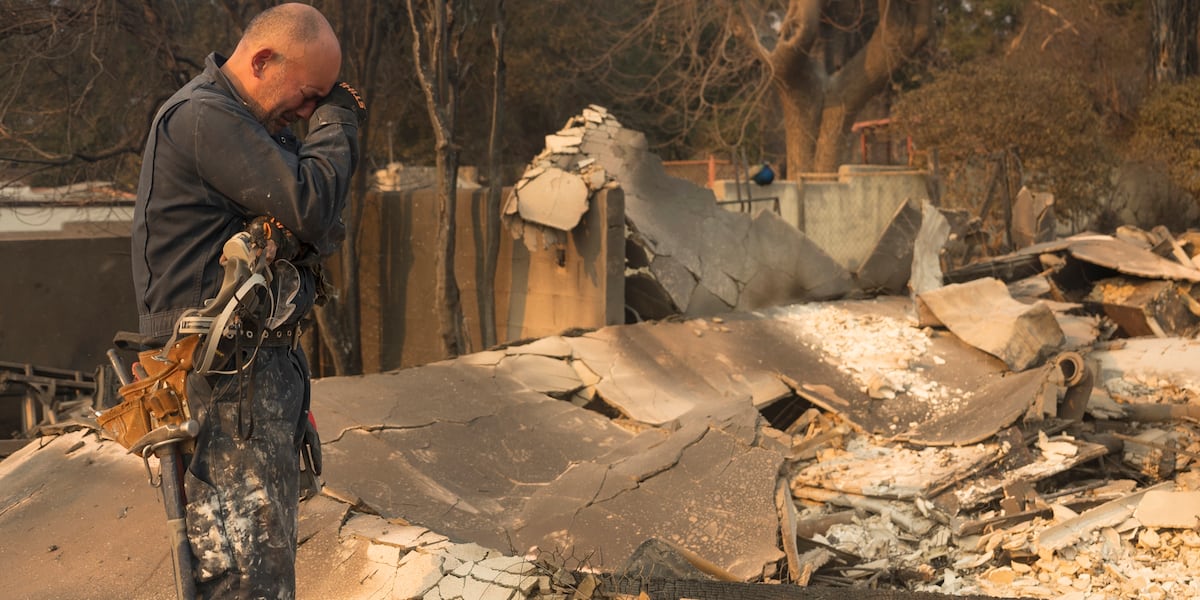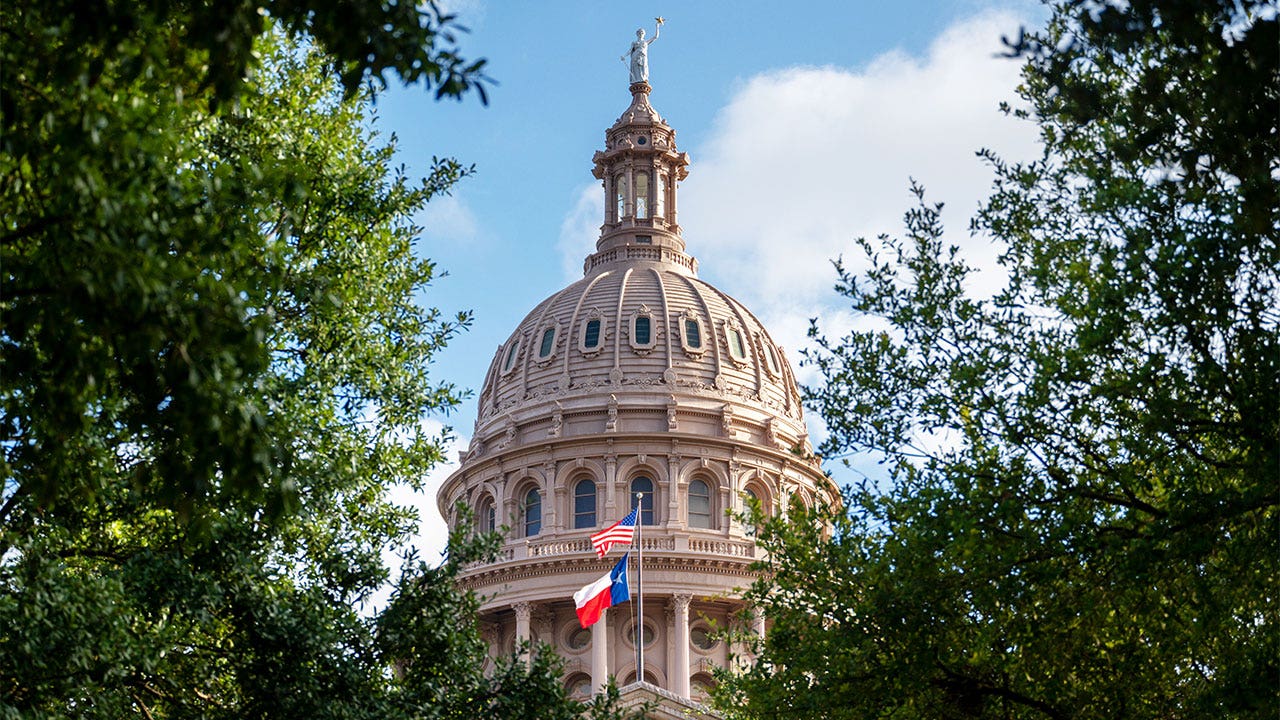Alaska
Boeing unable to identify workers in Alaska Airlines door plug mishap. Why can’t they provide records on Flight 1282?

The National Transportation Safety Board (NTSB) has expressed its inability to identify the individuals responsible for working on the malfunctioning door plug on Alaska Airlines flight 1282.
This information came to light in a letter from NTSB Chairman Jennifer Homendy to the Senate Commerce Committee.
The letter, dated Wednesday, reveals that Boeing, the aircraft manufacturer, has overwritten surveillance footage from the repair facility where the door plug was reinstalled before the flight earlier this year.
‘To date, we still do not know who performed the work to open, reinstall’
The NTSB had previously requested access to this footage to investigate the circumstances of the midflight incident further. However, the agency has been unable to ascertain which Boeing employees were involved in the work on the door plug, which failed and blew out during a flight in January.
ALSO READ| Alaska Airlines’s passengers recall mid-air horror, after window mishap a child was almost sucked out
Chairman Homendy stated in her letter, “To date, we still do not know who performed the work to open, reinstall, and close the door plug on the accident aircraft,” and added, “Boeing has informed us that they are unable to find the records documenting this work.”
In response to the ongoing investigation, Boeing issued a statement on Wednesday affirming its commitment to supporting the NTSB’s efforts. “We have worked hard to honor the rules about the release of investigative information in an environment of intense interest from our employees, customers, and other stakeholders, and we will continue our efforts to do so,” the statement read.
Chairman Homendy also addressed the issue during her testimony before the Senate Commerce Committee earlier this month. She informed the committee members that Boeing had not provided the necessary documents for the investigation, including the names of 25 individuals who worked on the door plug. “The absence of those records will complicate the NTSB’s investigation moving forward,” she expressed.
The NTSB’s initial request for these documents on January 9th was met with the information that the door crew manager was on medical leave. Subsequent requests for updates on February 15th and 22nd were met with a response from the manager’s attorney, stating that the manager was unable to provide a statement or interview due to medical issues.
ALSO READ| iPhone falls 16,000 feet from Alaska Airlines, emerges intact
Chairman Homendy pressures Boeing CEO for clarity
Following the March 6th hearing, Boeing submitted a list of personnel who reported to the door crew manager to the NTSB. However, this list did not specify who actually performed the work on the door plug. Chairman Homendy then reached out to Boeing CEO Dave Calhoun, requesting the names of the individuals who carried out the work. Calhoun responded that he was unable to provide such information and maintained that Boeing has no records of the work being performed.
Chairman Homendy clarified that the NTSB is not seeking the names of the employees for punitive reasons but rather to protect the identities of the door crew and other front-line employees who come forward.
In a statement to ABC News, Boeing reiterated its comprehensive response to all NTSB requests, providing relevant information. The company had initially provided the NTSB with names of Boeing employees, including door specialists, believed to have pertinent information. Following a recent request, Boeing supplied the full list of individuals on the 737 door team.
ALSO READ| Boeing CEO fights back tears as he addresses Alaska Airlines mid-air window blowout. Watch
“Early in the investigation, we provided the NTSB with names of Boeing employees, including door specialists, who we believed would have relevant information. We have now provided the full list of individuals on the 737 door team, in response to a recent request. With respect to documentation, if the door plug removal was undocumented there would be no documentation to share.”
“We will continue to cooperate fully and transparently with the NTSB’s investigation,” the company wrote in the statement.

Alaska
Alaska development agency may eye some exploration work next winter in Arctic refuge after ruling
A state development agency might consider doing some oil exploration work in the Arctic National Wildlife Refuge next winter, following a federal judge’s ruling Tuesday that the Biden administration lacked authority to cancel the agency’s oil and gas leases there, an agency official said.
The Alaska Industrial Development and Export Authority may not be able to pursue a full exploration program there next winter, with seismic surveys across the leases, agency executive director Randy Ruaro said in an interview Wednesday. But some seismic surveys — using seismic waves to map the subsurface — may be possible, he said.
That’s because the Biden administration threw up a major hurdle when it issued a decision in December that sharply limited exploration activity there, he said. That hurdle must still be removed, he said.
“They left part of ANWR open, even the Biden administration did, because they had to,” Ruaro said. “But quite a bit of it is zoned out.”
The agency is challenging the decision in court. It can also work with the Trump administration, which supports drilling in the refuge, to reverse Biden’s decision, he said.
“We’ve got a couple options,” Ruaro said.
But it’s unknown how long either option will take, he said.
The possibility of drilling in the refuge took a big step forward in 2017 when the Republican-led Congress passed a law opening the refuge to development.
The state agency acquired the seven leases, totaling 365,000 acres in the northwest corner of the refuge along the coast, in a lease sale held in the final days of the first Trump administration.
No major oil companies bid in that historic sale, and the state agency was the only bidder to hold on to its leases. But the Biden administration canceled the leases in 2023, citing legal flaws with the leasing program.
The 19.6-million-acre area for decades has been a battleground for pro-development advocates who say an oil discovery will help the economy and national security, and conservation and some Indigenous groups who fear it will threaten polar bears and caribou and add to climate pollution.
Judge Sharon Gleason, in her 22-page decision on Tuesday, said the cancellation violated the 2017 law calling for the refuge to be opened, because the Biden administration did not obtain a court order for the cancellation.
She sent the matter back to Interior, where the new Interior secretary, Doug Burgum, said last week that he plans to expand opportunities for oil and gas development in the 1.6-million-acre coastal plain of the refuge.
Alaska Gov. Mike Dunleavy and the Voice of the Arctic Iñupiat, representing elected Iñupiaq leadership from Alaska’s North Slope where the refuge is located, praised the decision.
So did Alaska’s U.S. senators, who helped write the provision in the 2017 law opening the refuge, and freshman Rep. Nick Begich III.
“After the first Trump administration developed a good program and AIDEA secured seven leases, the Biden administration spent four years attempting to turn the program on its head,” Sen. Lisa Murkowski said in a statement from the delegation Wednesday. “While we lost years of development to their willful intransigence, this decision is an important step to getting things back on track.”
Conservation groups and the Gwich’in Steering Committee criticized Gleason’s decision for allowing the agency to keep its leases. They said the state development agency has no ability to extract oil and gas, and has been has been the subject of reports showing it has made poor financial investments.
“AIDEA is the ‘grim reaper’ of Alaska megaprojects — when they show up to spend money, smart investors stay away,” said Andy Moderow, senior director of policy for the Alaska Wilderness League. “We will continue to challenge their misguided attempts to industrialize the Arctic Refuge, so that the Coastal Plain can sustain continued and new traditions for generations to come.”
‘Valuable deposits’
The refuge’s remote location in northeast Alaska, and the controversy over drilling there, has likely limited bidding interest from oil companies. The Biden administration held a second lease sale for the refuge early this year, but receive no bids of any sort.
Gleason’s decision suggested that the agency, which acquired its leases with the idea of working with exploration companies, could be sitting on sizable amounts of oil.
She said environmental reviews conducted under the first Trump administration and under Biden found that the coastal plain houses valuable deposits of oil and gas.
“Although these documents indicate that there are no proven plays, or groups of oil fields, due to the lack of oil and gas exploration in the Coastal Plain, they nonetheless confirm that the Coastal Plain contains valuable deposits according to the federal government’s best estimates,” Gleason wrote.
The U.S. Geological Survey in 1998 estimated that the refuge contains pools of oil that today would be comparable to large discoveries made in recent years in Alaska, far west of the refuge, such as at ConocoPhillips’ Willow field.
Ruaro said AIDEA has reviewed data from old wells drilled west of the refuge on state land. It’s also taken a new look at two-dimensional seismic surveys shot in the 1980s, when Congress allowed oil companies to drill the only well ever allowed in the refuge, he said.
“We think we have a very good idea of what’s in the northwest corner of ANWR, on our leases, and we think there are billions of barrels of oil,” Ruaro said.
The recent announcement of an oil discovery just west of the refuge also highlights the area’s oil potential, Ruaro said. The partners announcing the find included Australian-based Santos and Bill Armstrong, the geologist whose work led to major discoveries in Alaska and prompted ConocoPhillips to take steps that led the company to Willow.
“We think those trends continue into ANWR,” said Ruaro, referring to geological patterns that could support a discovery.
Next steps on possible exploration in the refuge will be considered by the agency’s board, he said. The agency will work with partners like the community of Kaktovik, an Alaska Native village in the refuge, along with the North Slope Borough and the Voice of the Arctic Iñupiat, he said.
“I would say that all options to advance the project and development are on the table, and we’ll get full guidance from our board,” Ruaro said.
The board will likely consider what it will take to soon acquire detailed, new seismic exploration data, known as three-dimensional seismic, which replaced the old 2D seismic technology, he said.
“3D is the goal,” he said.
Alaska
Alaska Airlines' new South Korea flights now on sale – The Points Guy

Alaska Airlines flyers will have a new way to get to Seoul, South Korea, this fall.
That’s when the Oneworld alliance carrier will launch its planned nonstop service between Seattle-Tacoma International Airport (SEA) and Seoul’s Incheon International Airport (ICN). Alaska will offer five weekly flights with a Hawaiian Airlines-operated Airbus A330-200 beginning Sept. 12.
The new route is part of a long-haul push by Alaska from its Seattle base. Daily flights to Tokyo’s Narita International Airport (NRT) begin May 12, and the airline promises to launch at least 12 long-haul destinations — including Seoul and Tokyo — from Seattle by 2030.
TPG’s picks: The most exciting new airline routes for 2025
Alaska plans to introduce one of the Boeing 787-9s that Hawaiian has on order on the new Seattle-Seoul route “soon.”
The push is enabled by Alaska’s merger with Hawaiian last year. While the two airlines continue to operate separately, Alaska plans to merge the latter into its own operations while keeping the Hawaiian brand for all flights that touch its namesake islands. Twin-aisle aircraft in Hawaiian’s fleet will continue to serve both U.S. and long-haul destinations from Hawaii — but they also enable new intercontinental nonstops from Seattle.
“The fundamentals to be successful in this industry are relevance and loyalty,” Ben Minicucci, CEO of Alaska Airlines, said at an investor event in December.
Acquiring Hawaiian, he and his leadership team said, gave Alaska both more network relevance along the West Coast, where Hawaii is one of the top vacation destinations. It also expanded its Alaska Airlines Mileage Plan loyalty program with the addition of HawaiianMiles members.
The new long-haul nonstops from Seattle are just another way that Alaska is trying to increase its relevance to customers.
Daily Newsletter
Reward your inbox with the TPG Daily newsletter
Join over 700,000 readers for breaking news, in-depth guides and exclusive deals from TPG’s experts
Pro tips: Major mistakes people make with travel rewards credit cards
The airline is also expanding its bases at both Portland International Airport (PDX) in Oregon and San Diego International Airport (SAN) with more flights and routes. In May, Alaska will connect Portland with both Eugene Airport (EUG) in Oregon and Houston’s George Bush Intercontinental Airport (IAH), as well as San Diego with Rogue Valley International Medford Airport (MFR) in Oregon.
Alaska’s international ambitions are not without risks. It faces a very competitive market in Seattle with Seoul already served nonstop by Asiana Airlines, Delta Air Lines and Korean Air (Korean Air recently acquired Asiana). Tokyo is served by All Nippon Airways, Delta and Japan Airlines. Most other major international destinations have at least one nonstop flight.
In September, Alaska is offering fares to Seoul for as low as $773 or 47,500 Mileage Plan miles one-way for economy. A business-class seat can be snagged for 250,000 miles one-way.
Below are the details of Alaska’s new Seattle-Seoul nonstop:
- SEA-ICN: Departs at 3:25 p.m. and arrives at 6:50 p.m. the next day on Wednesdays, Thursdays, Fridays, Saturdays and Sundays
- ICN-SEA: Departs at 8:50 p.m. and arrives at 3 p.m. on Mondays, Thursdays, Fridays, Saturdays and Sundays
Related reading:
Alaska
State lawmakers make push for Congress to remedy NOAA research station outages in Alaska
ANCHORAGE, Alaska (KTUU) – Alaskan senators are moving to pressure federal lawmakers to find a solution to reported outages of National Oceanic and Atmospheric Administration research stations in Alaska through a joint resolution that advanced from a Senate committee on Tuesday.
Earlier this month, senators heard public testimony on Senate Joint Resolution 12, which demands Congress to require that NOAA “ensure the reliability of National Data Buoy Center meteorological/ocean stations,” and take action order to “restore full functionality” of related equipment and the program as a whole.
The call for an assist from the federal government comes as state lawmakers express concerns over safety in Alaska – including for mariners and others in the state – with so many depending upon National Weather Service forecasting programs, including the buoy stations.
Sponsored by Sen. Forrest Dunbar, D-Anchorage, multiple iterations of SJR 12 have been proposed, with the resolution asking for specific attention to the subject of buoy research site outages from Alaska’s Congressional delegation, to include addressing the issue within the Commerce, Justice, Science, and Related Agencies Appropriations Act of 2025.
“These buoys provide precise, real-time information on a comprehensive set of weather conditions,” Dunbar explained at a prior hearing on the resolution. “Mariners, fishermen, and the Coast Guard rely on this information to assess ocean conditions.
“The problem is that, in the last five years, the weather buoys have been plagued with service outages,” he continued, adding that a buoy at NOAA Station 46061 – also known as Seal Rocks, in Prince William Sound – is of key importance, given its location between Montague and Hinchinbrook Islands and its role in the safe movement of oil tankers to and from Valdez. “The buoy was out of service all last winter, and the wave height instrument has been out of service all this winter, so the impact is, when the Seal Rocks buoy is out of service, the Coast Guard must rely on spot reports from passing ships, and data from more distant stations to estimate conditions in Hinchinbrook [Island] entrance. And these methods are not precise.”
The U.S. Coast Guard closes the Hinchinbrook Islands entrance, Dunbar explained, when weather conditions at Seal Rocks exceed a windspeed of 45 knots or seas of 15 feet.
“If a tanker lost power or maneuvering in conditions above these thresholds, rescuers would likely not be able to prevent it from grounding,” he added. “A tanker wreck would result in a severe oil spill devastating the local environment fisheries, and tourism.”
At the Senate Transportation Committee hearing Tuesday, Sen. Jesse Bjorkman, R-Nikiski, confirmed there were no testifiers in attendance in person or over the phone and closed testimony, moving the current version of SJR 12 – with individual recommendations and an attached fiscal note – out of committee. It is unclear when the bill might be taken up next.
See a spelling or grammatical error? Report it to web@ktuu.com
Copyright 2025 KTUU. All rights reserved.
-

 News1 week ago
News1 week agoVance to Lead G.O.P. Fund-Raising, an Apparent First for a Vice President
-

 News1 week ago
News1 week agoTrump Administration Ends Tracking of Kidnapped Ukrainian Children in Russia
-

 Business1 week ago
Business1 week agoEgg Prices Have Dropped, Though You May Not Have Noticed
-

 News1 week ago
News1 week agoTrump’s Ending of Hunter Biden’s Security Detail Raises Questions About Who Gets Protection
-

 World1 week ago
World1 week agoCommission warns Alphabet and Apple they're breaking EU digital rules
-

 Technology1 week ago
Technology1 week agoCFPB workers are reinstated after a court order, but many still can’t work
-

 Technology1 week ago
Technology1 week agoChip race: Microsoft, Meta, Google, and Nvidia battle it out for AI chip supremacy
-

 News1 week ago
News1 week agoZelenskyy says he plans to discuss Ukraine ceasefire violations in a call with Trump


















